
Imagine being able to watch Hulu, Fancast, Youtube and many other streaming services on your TV. How about Boxee? Yes, that too. What if you don’t want to share your local video viewing? XBMC is on it too. What can do the things I am talking about? The Neuros Link, one of the latest products from Neuros Technology.

Setup
To setup the Link, you plug a HDMI cable into your HDTV, plug in the power, and then plug in the keymote’s dongle. If you do not have a HDTV, you can use it with a DVI or VGA monitor, although Neuros states they will not support this. It works fine for me and that is how I am using it right now. If you are using HDMI, the sound should come to your TV out of the box, but you may have to go to a menu to change where your sound comes out. You can have the sound come out on the HDMI, the standard 1/8 inch jack or S/PDIF. Internet connectivity is via 1 Gbps Ethernet or Wifi.
Once you have everything connected, turn on the Link, and it will boot until Linux and bring up XBMC.

Software
The software that runs on the version of the Link I initially received was based on Ubuntu 8.10 “Intrepid Ibex”. That however has all changed with current shipping devices. Joe swapped my original Link review sample out for one of the later ones, which had several important changes including the software. The version of Linux it is based on now is Ubuntu 9.10, which is much more up-to-date than the previous version. They also switched the interface that is used when not in full screen apps to the Netbook Remix Launcher; I find this to be an awesome change. The big icons that are included in Netbook Remix are ideal for the 10 foot interface Neuros is shooting for.

When the Link boots up, you are automatically logged into the system which then launches into XBMC. XBMC is a full screen media consuming application that initially started out on the original Xbox. It has since been launched as a PC application and gone beyond what the original Xbox is capable of doing. XBMC lets you listen and watch local media very well, and it is the basis for Boxee which is also included.

The latest Boxee is shipped on the Neuros Link, and it is probably the best way to watch video on the web (or locally) if you don’t mind sharing your viewing with your Boxee friends.

Finally, Firefox with plugins and configuration tweaks comes installed on the Link, which makes watching web based video a piece of cake. When you launch Firefox, the Neuros.tv website is launched as its home page. This site is a crowd-sourced way of finding video on the web via Hulu, TV.com, Amazon Video On Demand and many other services. While I like the idea, I have found the website not as useful as it could be. That may be because once a video is found, it only works for a limited time. This is because Hulu and other services seem to only keep the last few episodes available on the web. This in turn makes a lot of the links you’ll find on the Neuros.TV service invalid, and the only thing you can do is report the link as being invalid. Otherwise, since you have Firefox, watching Hulu works well, but it is not great. That’s because Flash on Linux is not hardware accelerated, and it cannot take advantage of the graphics hardware capabilities. Neuros has also installed an on-screen keyboard Firefox plugin so you can tap URL’s out with the one-handed remote if you need to.
Hardware
The biggest changes to the Link have been in its hardware. On the initial launch it shipped with a ATI graphics card, an AMD Sempron 140 Processor (chosen for its lower power usage), a 4GB USB Thumb Drive and 1GB of RAM. The new system still has the Sempron, the 1GB of RAM and the thumb drive, but everything else has changed.

The current shipping version is pretty quiet thanks to some of the additional changes Neuros has made, including replacing the CPU fan with a 120mm fluid bearing fan and a new power supply. This version of the Link now shipping! Neuros is also making a kit available in the near future to perform this upgrade yourself. The name that Joe Born has given me for this version is the Neuros Link Phantom.
There are also other kits that you may purchase from Neuros so that you can install a hard drive inside the Link or a slimline DVD player. Joe sent mine with a 320 GB hard disk inside. If you are comfortable working on PC hardware and are going to hack on this a lot, then I would definitely switch to a hard drive and order this kit.
The biggest change to the hardware is the move to the Nvidia Geforce 8200 Graphics card. The Link with ATI graphics could not play 1080p video well at all. The Nvidia graphics chips have been supporting something called VDPAU for a while now. VDPAU stands for Video Decode and Presentation API for Unix. What this means is video rendering can be hardware accelerated if the application supports it. VLC, XBMC and more are being recompiled and reconfigured to support this. This means that your CPU won’t be taxed as much and is freed to do other tasks while you are watching a video.

The system also includes a wireless keymote as Neuros calls it. It has a trackball on one side and a scroll wheel on the other with not one, but two left mouse buttons, one on each side. The Link can also be bought without this keymote, so you could use your own wireless keyboard with it like the Logitech diNovo Mini which has already been tested and works with the Link.

An optional accessory Joe also sent is a one-handed remote Neuros calls the Neuros Link Remote Control. It has a whole bunch of buttons, left and right mouse clicks, a trackball. This remote is only $29.99; it uses the same dongle as the keymote and can be used simultaneously with the same dongle. The one-handed remote is really nice when you’re just clicking around XBMC or Boxee. However, sometimes you really need the keyboard to enter passwords, login information, enter a URL or perform a search. When you have both, you can easily switch back and forth between the two with no issues.
If you have to make a choice between the two, I would go with the keymote.
User Experience
I am glad Neuros chose to base the Link’s image with the Netbook Remix version of Ubuntu in the latest release. This interface is ideal for both smaller screens and really large screens as well; this would include your HDTV. The big icons and easy to navigate interface of the Netbook Remix Launcher makes it a piece of cake to launch Firefox, XBMC, Boxee or any other app.
One feature I do not like much is the fact that XBMC loads on startup. This might be all right if you have a lot of media installed on the Link, but since the main version of the device is only on a 4 GB USB Thumb drive, you are severely limited. XBMC is nice to have on the Link, but you almost have to add an external hard disk for media storage or upgrade to an internal hard disk to make XBMC a good primary choice. Neuros has made some configuration changes to XBMC that let you launch Firefox and other apps which is nice, but I really prefer using the Netbook Remix Launcher to XBMC to open other apps.
Initially when I received mine, the 4 GB image had not been expanded on the hard disk Joe had installed. I was constantly seeing the OS reminder that the disk was almost full, which is not something that is comforting for a new out-of-box experience. Granted, this may be because I installed too many things before checking the drive space so, this may not be an issue for you.
The file system that Neuros has chosen to use on the Link is more akin to FAT32, whichwe used to use on Windows. It’s ext2, for the Linux guys out there, which hasn’t been used as a default in quite a while. What this means to you, is that when there is a power outage, you will have to go through file system checks. I think they should have chose ext3 for the file system, which doesn’t have this problem as severely as ext2, and certainly not on every boot after a power outage. Neuros probably went the direction they did because of the limited write cycles of flash drives. However, worrying about a 4 GB flash drive dying isn’t that big of deal anymore, since they can be replaced for about 12 bucks. My advice to Neuros for future Link software builds would be to go to ext3 for the main image, even on the flash drive. This will also help keep users from seeing the Linux version of a file system check, which isn’t the most user friendly for non Linux users.
Overall Performance
I was very impressed with the performance of the Link in regard to video stored on the device. I used VLC and XBMC and video from 720p down played really well. 1080p video was acceptable, but it looks to me like VDPAU isn’t entirely integrated into Ubuntu as of yet. I expect that in the next release of Ubuntu, the Nvidia drivers that you install after a full install will include VDPAU out of the box. If the driver was’t enough, the apps also have to be compiled to take advantage of this feature. Some do, but there are a lot that don’t have VDPAU compatibility including Adobe Flash. This will improve as long as Neuros keeps improving the Link.
Hackability
The best part of the Link is the fact it runs Linux, and it uses a very well liked and supported version of Linux with the Ubuntu distribution as its base install. You can install nearly anything that is in the Ubuntu repos on the Link with almost no problems. The only app I could not get working actually caused issues with the Nvidia drivers, and that was Miro. However, installing Samba, Apache, MySQL and more is all possible on the Link. Neuros even encourages this practice. Neuros also has no problems with you upgrading the RAM or other components. They even sell an accessory kit which includes the SATA and IDE cables for installing internal hard disks or a slimline DVD/BluRay player. Linux geeks should be happy with this system.
The Neuros Link with Keymote is $299.99. The Neuros Link without Keymote is $249.99. The new Neuros Link Phantom will be $279.99 without Keymote, and $329.99 with the Keymote. The optional Neuros Link Remote is only $29.99 (with no reciever). The keyboard receiver is only $9.99 for replacements or in case you just want to buy a remote and dongle for other systems.
Update: The version of the Link that Joe sent me is version 1.2 and product is available for order at the links I have provided.
What I Like: This is a very flexible system. It’s based on Ubuntu Linux which means you are not limited by codecs or by Neuros in what you do with the system. I REALLY like that! Also, with the 120mm fan, it is super quiet. If you can’t wait to order your Link, be sure to get the fan kit as soon as it’s available. I applaud Neuros for attempting to bring a Linux system down to the mere mortals. My son and wife can both use this to watch things on the web, and that is saying a lot.
What needs improvement: Most of the items that need improvement are ones the Linux community or Adobe need to work on. Flash on Linux needs to be improved upon by Adobe. VDPAU needs to be more widely supported by the default apps out of the box. Switching to ext3 makes the system boot much faster after an unintended power outage. Also, the hard disk should be a default now, or if not a hard disk, an internal SSD vs an external USB drive. This would make this system much more like an open version of Apple TV, as well as being able to view web content.




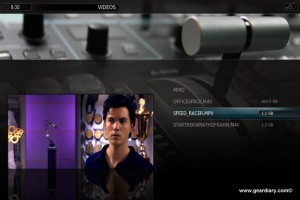





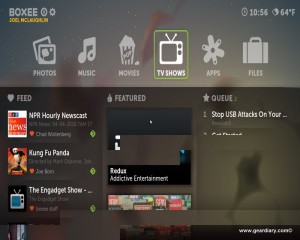
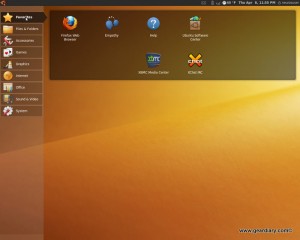


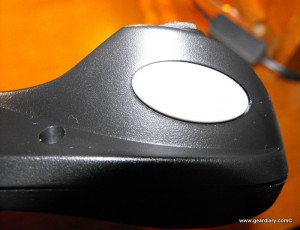




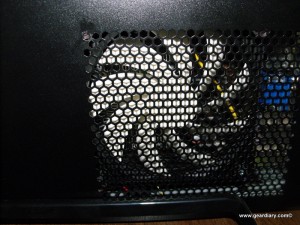


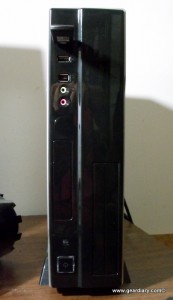
Review: Neuros Link #gadgets http://bit.ly/cLjnIK
Review: Neuros Link | Gear Diary: Joe swapped my original Link review sample out for one of the later ones, which … http://bit.ly/c7iBFw
A GearDiary Review of the LINK, with screen shots, etc : http://bit.ly/bLB120
Review: Neuros Link http://goo.gl/fb/RO1Ms
Make sure to check out my review of the Neuros Link! http://is.gd/bnEza
RT @geardiary: Review: Neuros Link http://bit.ly/dcR7bI
RT @gorkon Make sure to check out my review of the Neuros Link! http://is.gd/bnEza